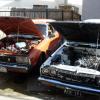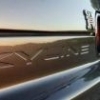Brake Bleed Fail
Announcements
-
Similar Content
-
Latest Posts
-
So either way it is gearbox out and look what is wrong? I know about the input shaft bearing. Even before swap/new clutch the it sounded exactly like this: So is that inout shaft bearing or the other was installed backwards? And can some please tell me the part number for that input shaft bearing? The gearbox is small box from R34 N/A and number is FS5W71C. Thank you
-
I am yet to see anyone ever regret a quaife or helical. ...other than drifting/skidpan duties. I kind of want to upgrade my factory helical with a Quaife (but really it's not ultimately that different, and is a MASSIVE UNDERTAKING), that's how good the hype is about them, that I want to try them 'just to see'
-
D2 and Ksport are essentially the same thing and basically just generic Taiwanese manufacture. Better than ChinaBay crap, but... not top shelf. Öhlins have got to be some of the best dampers around, so likely to be a good option. It's going to get to the point though where I suggest you buy from Oz. We have at least 2x excellent options here. If I were you though, I'd be talking to KW about doing something for the R33. There's bugger all difference between that and the 32. In GTR land, anyway.
-
KW only offers a set for the R32 GTR. Popular options are D2 racing, Ksport or Öhlins. I have a D2 Racing coilover set, though I don't know for sure which one.
-
Well, the good news is you have more than one very good option for new coilovers in and around your country. Worth the drive over to KW to talk about GTR stuff.
-








Recommended Posts
Create an account or sign in to comment
You need to be a member in order to leave a comment
Create an account
Sign up for a new account in our community. It's easy!
Register a new accountSign in
Already have an account? Sign in here.
Sign In Now